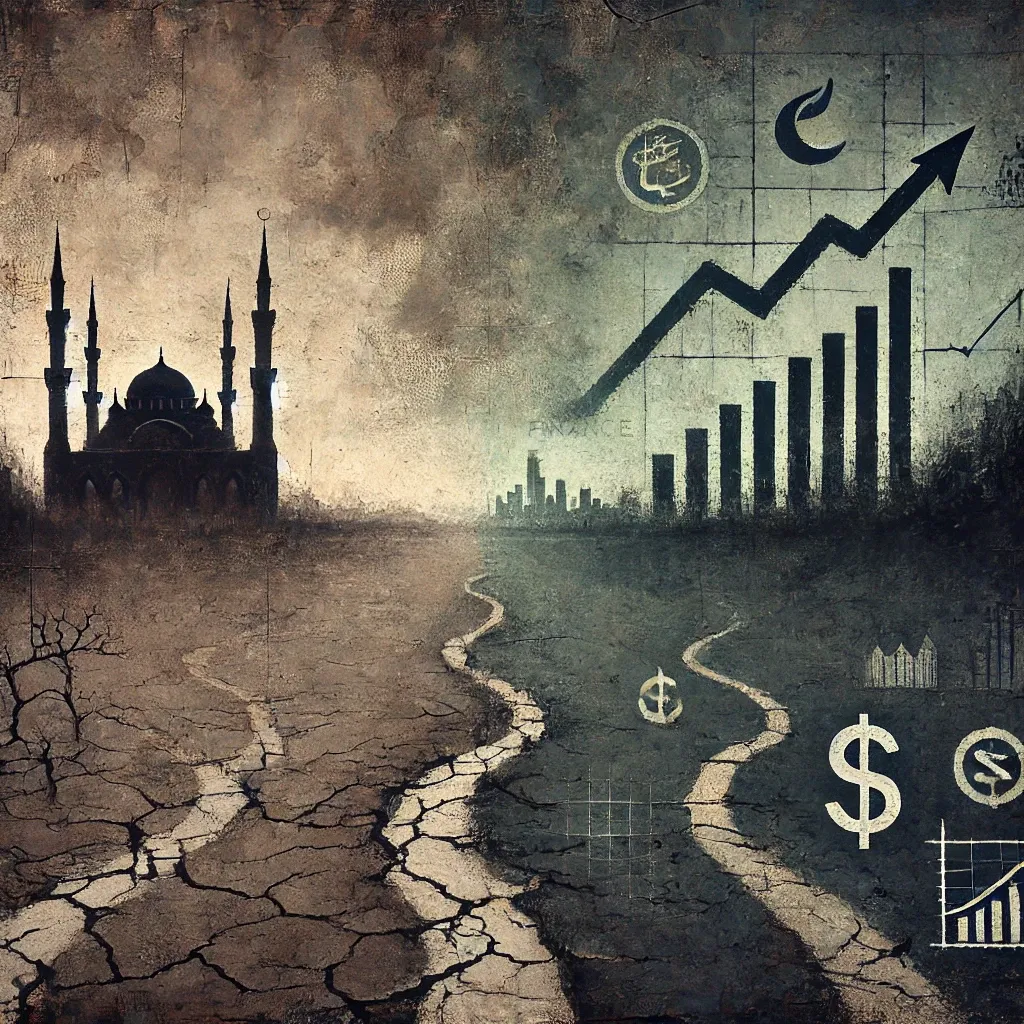Islamic finance was initially envisioned as a system built on justice, ethical values, and social responsibility. It was designed to serve the Muslim community and society at large by aligning economic activities with Islamic moral principles, emphasizing equity, risk-sharing, and the prohibition of interest (riba). However, recent research by Mehmet Asutay and Isa Yilmaz sheds light on a troubling trend: the gradual financialisation of Islamic finance, which increasingly mirrors the capitalist, market-driven systems it was meant to counteract. Their study, titled "Financialisation of Islamic Finance: A Polanyian Approach on the Hegemony of Market Logic over Islamic Logic," suggests that Islamic finance may be moving away from its ethical foundations in favor of conventional financial practices. This article offers a concise yet insightful look into the implications of their findings.
The Original Mission of Islamic Finance: Ethical Embeddedness
Islamic finance emerged in the mid-20th century, with aspirations to create an alternative to the capitalist financial model, which often disregards social and moral considerations. Driven by principles rooted in Islamic law (Shari’ah), it was intended to operate as an "embedded economy"—an economy inherently connected to social norms and values. This idea of embeddedness comes from economist Karl Polanyi, who argued that economic systems should be integrated into societal values rather than dominating them.
In Islamic finance, this embeddedness takes shape through a focus on justice, fairness, and the welfare of all stakeholders. Contracts are expected to avoid speculation (gharar), align with profit-loss sharing (PLS) principles, and encourage investments that directly contribute to the real economy. Unlike conventional finance, Islamic finance was envisioned to reduce societal inequality and prioritize social goals over profit.
From Principles to Practice: The Shift Begins
Yet, as Asutay and Yilmaz highlight, the practical application of Islamic finance has, over time, strayed from these foundational principles. While Islamic finance’s intent was to create a value-based system emphasizing genuine economic activity, the authors observe that it has been drawn into the very system it once sought to oppose. A growing preference for debt-based over equity-based financial instruments has brought Islamic finance into alignment with conventional market logic.
One example is the popularity of murabahah contracts, a type of cost-plus financing that resembles a conventional loan more than a risk-sharing investment. Rather than sharing profits and losses, murabahah transactions give a fixed return to the financier, much like interest. The sukuk (Islamic bond) market, which allows investors to earn returns on debt-like products, represents another move towards debt-based financialization, resembling conventional bonds more than true investment in the productive economy.
Understanding Financialisation and Its Influence
Financialisation, in the view of Asutay and Yilmaz, is the process by which financial motives and market logic start to dominate social and economic systems. Instead of supporting productive activities that create real value, financialisation promotes the idea that profits should be generated primarily through financial channels, often disconnected from the real economy.
In conventional finance, this leads to practices where financial instruments—stocks, bonds, derivatives—are traded and leveraged independently of actual economic growth or productivity. In Islamic finance, a similar pattern is emerging, with debt instruments, market-driven financing structures, and speculative tendencies undermining the sector’s alignment with Islamic ethics.
The authors adopt Polanyi's concept of disembeddedness to illustrate this shift. They argue that Islamic finance has moved from an embedded economy—one integrated with Islamic moral principles—to a disembedded one, where market logic overrides ethical considerations. This shift distances Islamic finance from its intended socio-economic role and makes it susceptible to the same issues of instability and inequality seen in conventional finance.
The Role of Shari’ah Scholars in Financialisation
A unique aspect of Islamic finance is its reliance on Shari’ah scholars, who are tasked with ensuring that financial products and practices comply with Islamic law. However, Asutay and Yilmaz argue that Shari’ah scholars themselves may inadvertently contribute to financialisation. Operating as "gatekeepers" in the financial system, these scholars sometimes provide legitimacy to hybrid products that balance between Shari’ah compliance and conventional market appeal.
In some cases, Shari’ah boards permit practices like tawarruq, which involves a series of transactions that mimic traditional loans. Though permitted by some scholars, these products are controversial and have been criticized for violating the spirit of Shari’ah. This tension between fulfilling market demands and upholding Islamic values points to a deeper issue within the structure of Islamic finance, as Shari’ah boards often find themselves balancing religious authenticity with financial viability.
Case Study: Malaysia as a Model of Financialised Islamic Finance
The study includes a case analysis of Malaysia, which has become one of the most developed Islamic finance markets globally. Malaysia’s approach to Islamic finance reveals how deeply financialisation has permeated the sector. In Malaysia, debt-based instruments such as murabahah and tawarruq dominate the market. From 2016 to 2019, the use of tawarruq in Malaysian Islamic finance grew from 22% to 46%, signaling a significant shift toward debt-based financing.
In their analysis, the authors argue that this pattern reflects Malaysia’s embrace of neoliberal policies, with Islamic finance serving as a tool for creating a "Muslim middle class" and advancing economic inclusion. While these goals may seem positive, the reliance on debt-driven instruments to achieve them reflects a fundamental departure from Islamic finance’s risk-sharing ethos. Instead, financialisation fosters a system in which individuals and businesses are encouraged to take on debt, risking personal and societal financial instability.
The Consequences of Financialisation: Indebtedness and Speculation
As debt-based products proliferate, Islamic finance risks cultivating a culture of indebtedness, where financial transactions prioritize short-term gains and profit maximization. In Islamic finance, debt is meant to be discouraged in favor of equity-based models, yet the sector’s increasing alignment with conventional finance has led to practices that create a debt-heavy environment.
The implications extend beyond individual consumers. As debt-based financing grows, so does the disconnect between financial activities and the real economy. Investments in sectors like real estate, for example, drive speculation rather than actual economic productivity. This divergence erodes the socio-economic objectives that were meant to define Islamic finance, and undermines its credibility as an ethical, socially embedded system.
A Path Back to Islamic Moral Economy
Asutay and Yilmaz argue that Islamic finance must realign itself with the foundational principles of the Islamic moral economy (IME). This concept, which emerged in the 1970s, emphasizes a balanced, equitable economy where financial activity serves societal welfare rather than individual profit. It envisions a system where contracts promote genuine economic partnerships, sharing risks and rewards fairly among all parties.
To re-establish this IME-based vision, Islamic finance must reduce its dependency on debt-based instruments and prioritize equity-based, risk-sharing models. For example, partnerships like musharakah (joint ventures) and mudarabah (profit-sharing agreements) align more closely with Islamic ethics, as they foster a balanced distribution of profits and encourage investments grounded in real economic activities.
Lessons from Islamic Finance’s Journey
The financialisation of Islamic finance is, as Asutay and Yilmaz highlight, a cautionary tale about the power of market forces to reshape even the most value-driven systems. In its original conception, Islamic finance was supposed to offer a counter-narrative to global finance, showing how economies could prioritize ethical and social objectives. Yet, as the field has grown, it has struggled to resist the pull of market logic, which often rewards profit maximization over community welfare.
For Islamic finance practitioners and policymakers, the study serves as a reminder that maintaining ethical integrity in financial systems requires constant vigilance. This may mean resisting short-term market trends in favor of long-term investments in the real economy and realigning the industry with the principles of equity, justice, and community welfare.
Why You Should Read Asutay and Yilmaz’s Work
The findings in "Financialisation of Islamic Finance" are essential reading for anyone interested in Islamic finance or ethical finance. Asutay and Yilmaz provide a thoughtful, critical analysis of Islamic finance’s evolution and raise important questions about the future of ethical finance in a globalized, market-driven world. For Muslims who value ethical finance aligned with Shari’ah principles, this study underscores the need for vigilance and active efforts to keep Islamic finance true to its ethical foundation.
Acknowledgment: This article is based on “Financialisation of Islamic Finance: A Polanyian Approach on the Hegemony of Market Logic over Islamic Logic” by Mehmet Asutay and Isa Yilmaz, published in New Political Economy (2024). Their work offers a comprehensive and thought-provoking look into this complex issue. You can access the full study for an in-depth understanding of the nuances and empirical analyses that support their arguments.


